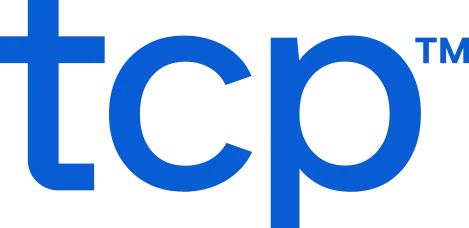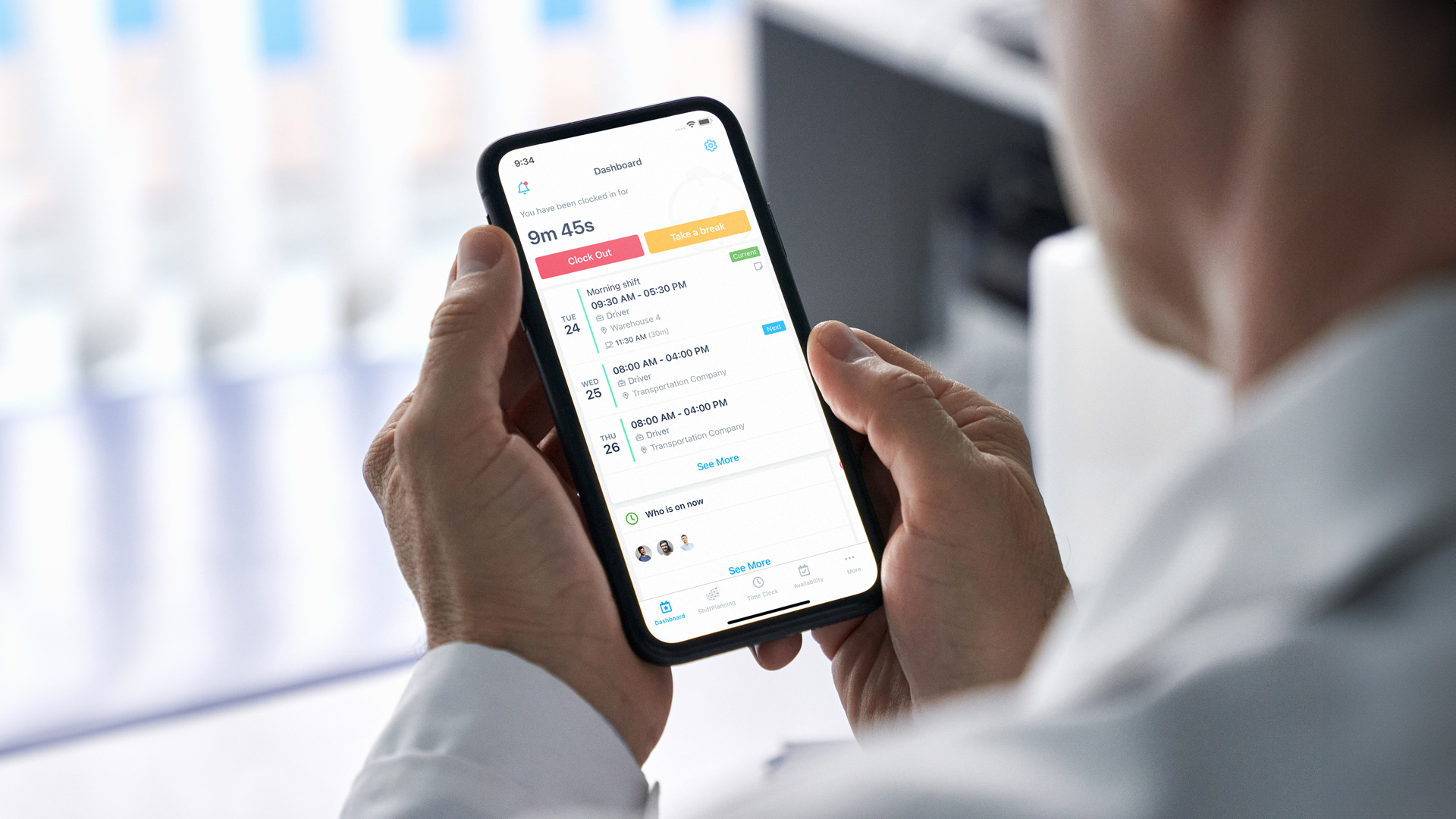Perhaps you’re familiar with a common scheduling scenario we’ve seen play out for hundreds of buyers who’ve become TCP customers over the years:
It’s the start of a busy week. Two employees swapped shifts without telling their manager, another employee called out sick, and a supervisor is stuck texting the team to cover an uncovered shift. By the time the dust settles, labor costs are off track and everyone’s stressed for no good reason.
That’s the reality when employee scheduling is handled by generic tools or buried as a small module in a massive HCM suite. On the surface, “one system for everything” sounds appealing. But when it comes to scheduling — where coverage, compliance, and costs collide — you can’t afford “good enough.”
So the question is: Do you go deep with a standalone employee scheduling software, or settle for a scheduling tab inside an all-in-one HCM?
Scheduling touches compliance, labor costs, employee experience, and how your day-to-day operations run. With this much at stake, it pays to understand the tradeoffs. Is standalone employee scheduling software worth it, or is “good enough” in an all-in-one HCM suite actually good enough?
This guide compares both paths so you can decide what fits your workforce.
Overview: standalone scheduling vs. all-in-one HCM
Side-by-side, both options can publish a schedule. But beyond that, they serve your organization in different ways:
Standalone scheduling solutions — Designed specifically for building and managing schedules. Expect deeper configuration, industry-aware rules, and interfaces built for the managers and employees who use them every day. They scale as your workforce grows.
All-in-one HCM suites — Broader systems with multiple HR modules under one roof. They offer a unified data environment and single vendor management but often lack flexibility or depth in specialized areas like scheduling.
Here’s how they compare on the factors that matter most:
| Factor | Standalone employee scheduling software | All-in-one HCM suite with scheduling |
| Feature depth | Built for scheduling, compliance, and industry-specific rules | Covers the basics, but limited in specialized scenarios |
| User experience | Interfaces designed for managers and employees; quick to onboard and learn | Generic workflows across modules; scheduling feels stitched together |
| Implementation | Faster rollout — one function to configure | Longer rollout — suite configuration comes first |
| Integration | Open APIs; plug directly into payroll/ERP/HCM | Strong internal links, weaker external connections |
| Industry fit | Handles niche scheduling rules and workflows out of the box | Often needs custom work to shake off the generic feel |
| Upfront cost | Pay only for what you need | Bundled pricing, but higher switching costs |
| Total cost of ownership | Lower, tied to features you actually use | Higher ongoing costs for the whole suite |
| Vendor flexibility | Swap tools without re-platforming | Replacing a module can mean replacing the entire suite |
| Risk profile | Vendor-agnostic; future-proof and adaptable | Risk of lock-in with fewer options down the road |
How all-in-one HCM suites handle scheduling
Most HCM or ERP suites include a scheduling module as part of their package. One login, one contract, one system of record — it seems convenient
But the reality is that scheduling modules in these systems are competing for attention and usually just cover the basics, not the edge cases you face in your specific industry or vertical.
The challenge of all-in-one scheduling
When scheduling is one tile on a big platform, the nature of design itself takes over. Scheduling in an HCM suite won’t get the same attention as core HR or payroll, which shows up in the form of:
- Limited compliance support — struggles with labor law compliance ,CBAs, predictive scheduling laws, or union rules
- Weak forecasting — difficult for managers without technical and analytics expertise
- Generic UI — designed for HR generalists, not frontline managers and schedulers
- Slow iterations — feature updates compete with dozens of other priorities
- “Check the box” approach — scheduling works, but just at a basic level
The benefits of all-in-one HCM suites
If you’re a smaller organization with straightforward needs in one location, the convenience can outweigh the gaps:
- One vendor and one relationship to manage
- Consistent look and feel across HR apps
- Built-in links between payroll, benefits, and schedules
- Potential savings for s simple use cases
If your scheduling needs are complex or fast-changing, though, that convenience can become a ceiling. That’s where a dedicated scheduler earns its keep.
Why your organization needs standalone employee scheduling software
Employee scheduling software like Humanity Schedule is built for the people doing the actual scheduling work — the managers building shifts, the employees requesting changes, and the administrators keeping you compliant.
Every workflow is tuned to make those tasks faster and less error-prone. That focus pays off in several ways.
Higher adoption and easier onboarding
Interfaces designed specifically for scheduling lead users straight to the tasks that matter — building shift schedules, approving swaps, or managing time-off requests. Instead of wading through generic HR menus, managers and employees can get in, get what they need done, and move on.
That simplicity drives adoption:
- Employees are more likely to use the system consistently
- Managers spend less time answering basic questions
- Your organization gets stronger coverage and more reliable scheduling data.
Deeper functionality where it counts
Standalone scheduling software comes with advanced capabilities baked in, like shift bidding, demand forecasting, automated compliance with fair workweek laws, and more. These tools adapt to your real-world challenges without the clumsy workarounds common in HCM suites.
Here are a few examples of where standalone employee scheduling software makes all the difference.
Example: Complex coverage needs
If you manage multiple departments, locations, or job roles, building schedules can feel like solving a puzzle where the picture keeps changing. Standalone scheduling systems let you layer in skills, availability, union rules, and compliance laws, so you can build accurate schedules without hours of manual adjustments.
Example: Last-minute changes
When someone calls out sick or a demand suddenly spikes, coverage can’t wait until next week’s payroll cycle. Dedicated scheduling solutions update in real time, making it easy to reassign shifts, notify employees instantly, and keep coverage intact.
Trying to get an all-in-one suite to adapt to these scenarios is as tricky as handling the scenarios themselves.
Integrations that don’t lock you in
Are you still worried about juggling too many systems?
Modern scheduling integrations come with open APIs and ready-made connectors for HR, payroll management, time tracking systems, and communication platforms, so information moves seamlessly without the need for manual fixes.
In practice, that looks like:
- Schedules sync to timekeeping and payroll — no duplicate entry or spreadsheet corrections
- Demand forecasting pulls from sales data or census systems — helping you build right-sized schedules that match real demand
- HRIS changes cascade automatically — roles, locations, and skills flow into scheduling eligibility and assignments
- Alerts and shift openings reach employees instantly — through text, email, or mobile apps, so coverage gaps close quickly
- Replace components — adapt faster without tearing out your core tech stack
With an HCM suite, swapping a weak scheduling module can force a full re-platform. With standalone, you adjust one piece and move on.
How all-in-one HCMs limit your employee scheduling
Your organization doesn’t run like everyone else’s.
You have your own workforce structure, compliance rules, and service expectations. A one-size-fits-all scheduling tab inside an HCM suite can’t keep up. Public safety has union and minimum-staffing requirements. Healthcare balances rest rules and credentials. Retail and hospitality juggle unpredictable demand and predictive scheduling laws. Construction and manufacturing require work across jobs and crews.
When a generic scheduling module in an HCM can’t keep up, teams fall back to spreadsheets and side channels — creating coverage gaps, compliance risk, and last-minute scrambles. The right scheduling solution meets those realities with the your rules and workflows, so schedules are reliable and defensible.
Here’s how the right scheduling features directly address industry challenges:
| Industry | Why standalone employee scheduling software matters for you |
| K–12 education | Cover substitutes, manage extra duty assignments, and stay within hourly limits — integrated scheduling cuts down manual admin work. |
| Government & public safety | Apply complex overtime pay rules and union agreements, keep 24/7 rotations staffed, and track certifications to ensure compliance. |
| Healthcare | Staff around 12-hour rotations, on-call pools, and credentialed roles; adjust patient volume in real time. |
| Retail & hospitality | Forecast demand, enable self-service swaps, and stay aligned with fair workweek rules. |
| Manufacturing & construction | Tie shifts to jobs and differentials; support remote/offline crews. |
| Small business | Get up and running quickly with minimal training, only paying for the features you actually use — no IT team required. |
| Large enterprise | Keep core HR inside your HCM; plug in advanced scheduling for specific plants, regions, or hourly workforce segments. |
Real-world examples of standalone vs. all-in-one scheduling
On paper, both systems claim to “schedule employees.”
But in your day-to-day operations, the differences become clear. Uncovered shifts, missed compliance rules, or gaps force managers back to spreadsheets. This is where standalone employee scheduling software shows its value over an HCM suite’s basic scheduling tab.
Here’s how those differences play out in different industries.
K–12 education
- All-in-one — An HCM suite can record teacher hours, but it doesn’t manage substitutes or extra duty work. That leaves administrators piecing schedules together manually.
- Standalone — A dedicated K–12 employee scheduling software automatically assigns qualified substitutes, tracks extra duty hours, and pushes accurate data straight to payroll.
See what K-12 employee scheduling software looks like in action.
Healthcare
- All-in-one — A hospital’s HCM suite posts shifts but doesn’t check staff credentials, fatigue limits, or patient volume. Nurse managers end up catching issues after the fact.
- Standalone — Employee scheduling software that supports healthcare enforces credential rules, monitors rest and overtime requirements, and adjusts staffing in real time as patient census changes.
- See what healthcare employee scheduling software looks like in action.
Manufacturing
- All-in-one — A plant’s HCM suite can create schedules, but it struggles with role-based pay rates, certifications, and rotating crews. Managers often patch the gaps with spreadsheets.
- Standalone — Manufacturing employee scheduling software ties shifts directly to roles and projects, applies differentials automatically, and feeds labor cost data into ERP systems in real time.
See what manufacturing employee scheduling software looks like in action.
Public safety and government
- All-in-one — Logging officer or firefighter shifts is possible, but union rules, seniority-based assignments, and minimum staffing requirements are often left to manual oversight.
- Standalone — Public safety scheduling software enforces union and seniority rules as schedules are built, flags conflicts instantly, and maintains an audit-ready record of every assignment.
See what public safety and government employee scheduling software looks like in action.
Retail
- All-in-one — Static schedules might get posted, but they don’t adjust when associates swap shifts or customer demand spikes. Managers scramble to fill coverage gaps.
- Standalone — A retail employee scheduling software makes it easy to update schedules at any time, enables employee self-service for swaps, and keeps compliance intact even when plans change.
See what retail employee scheduling software looks like in action.
Next steps in finding your employee scheduling solution
If you know your priorities, then you’ll know whether a standalone scheduling solution or an all-in-one suite is best.
Looking for specialization, compliance support, and the ability to adjust quickly? A dedicated employee scheduling software is the stronger fit. Have simpler needs and vendor consolidation is your primary goal? A suite can work but confirm its scheduling module truly meets your requirements.
With standalone employee scheduling software, you don’t have to trade convenience for capability.
Why Humanity Schedule works best for your organization
With today’s integration capabilities, you don’t have to choose between specialization and connectivity. Humanity Schedule is purpose-built for employee scheduling yet designed to connect with your payroll, time tracking, and HCM systems.
That focus pays off with:
- Accurate, real-time schedules — instant updates keep everyone aligned
- Smarter schedule building — drag-and-drop tools and AI-powered forecasting cut hours off admin time
- Fewer coverage gaps — managers reassign quickly, employees swap or claim shifts through self-service
- Compliance confidence — predictive scheduling, CBAs, and credential rules built in
- Better adoption — a user-friendly interface that drives engagement and reduces training needs
Humanity Schedule keeps your workforce confident, compliant, and covered for your scheduling demands today and the future.
TCP Software’s employee scheduling and time and attendance solutions have the flexibility and scalability to suit your business and your employees, now and as you grow.
From TimeClock Plus, which automates even the most complex payroll calculations and leave management requests, to Humanity Schedule for dynamic employee scheduling that saves you time and money, we have everything you need to meet your organization’s needs, no matter how unique. Plus, with Aladtec, we offer 24/7 public safety scheduling solutions for your hometown heroes.
Ready to learn how TCP Software takes the pain out of employee scheduling and time tracking? Speak with an expert today.


